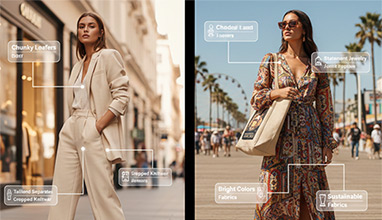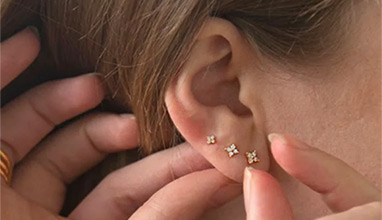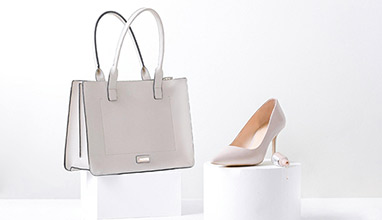Fashion Business: How To Write A Fashion Business Plan
What do fashion moguls on Fifth Avenue have in common with fledgling designers in basements? They all had a business strategy before they began making garments and recruiting software developers.

The fashion business has flourished in the previous two to three decades. What was once a 30-million-strong sector today employs more than 80 million people. And not just the fashion sector but even entertainment and commercial industries have experienced tremendous changes in the past decade. Games and TV series, trending escape rooms near me, facilities and activities, food delivery, and online learning services are only some of them.
The Fashion Industry and how you can build your plan to succeed in it
Fashion is one of the most inconsistent things in the world. At any point, something may be trendy and then lose popularity the next instant. So, if you want to start your clothing line, make sure you have a strategy to get your concept from your mind to the market.
Maybe you wish to start a fashion line with your creative vision. Or perhaps you're ready to challenge the status quo with a game-changing company. Whatever the goal, you must always begin with a strategy. Running a fashion company is difficult and time-consuming. However, the rewards may be life-changing if you are dedicated to adhering to your procedure.
A plan helps fashion companies with limited resources clarify what, how, and to whom they sell. It explains what makes them unique. It identifies their rivals, and most significantly, it demonstrates that they can generate money. So let us look at how you can create your fashion plan to implement it in your business:
1. Do your research
Writing a business strategy may be intimidating for creative people. However, there are various courses accessible, as well as market research and competitive analysis to help you in the same.
For example, aspiring fashion executives in New York may apply for one of the 25 spaces available in the FIT Design Entrepreneurs yearly program. Market research businesses such as Euromonitor and NPD provide data on market trends and growth rates regularly.
So, take some time to consider your brand's narrative and what makes you stand out from the competition before you compose the first word in your business plan. Since fashion is now more accessible to everyone, it's also more challenging to stand out from the crowd. Therefore, research and check out fashion design business profiles or business proposal examples. It will offer you a sense of what works and what doesn't.
2. Market analysis
After introducing yourself and your clothing line, your strategy should quickly go on to a quick analysis of your market, including any potential competitors. Determine your top rivals, their market share, and where your apparel firm fits in (or shines out).
Demonstrate a thorough understanding of your customer's needs. Provide insight into your clients and why they'll be interested in your brand once you've completed your market investigation. You will want everyone who reads your business plan to leave with the idea that you know everything there is to know about your clients.
Identify and describe the potential and size of your unique market and your rivals and target clients. Outlining consumer demographics is usually a good idea. You can consider taking this planning element to the next level by including customer testimonials.

This social proof may be a highly effective way to persuade prospective investors or lenders that your company already has a satisfied consumer base. Thus, try focusing on a particular target in a crowded field like fashion. Understanding your most influential audience, what they want, and how they want it may lead to increased long-term sales and the ability to build brand advocates.
3. Make use of your relatives and friends
Remember that everyone consumes fashion while finding out funding opportunities for a firm. Using individuals around you to construct your deck of consumer insights is incredibly beneficial and eye-opening.
It is also true for inserting figures into a company strategy. You may enlist the services of a friendly MBA student to prepare financial spreadsheets, either as a favour or for a small charge.
However, since fashion is primarily a visual industry, the strategy might result in a more attractive, condensed "pitch deck." You can also use the pitch deck to enlist the help of advisory board members. They can utilise their knowledge to put a design idea to the test.
You can also have people with legal and financial knowledge. By assembling an advisory board consisting of designer mentors, former professors, and friends, you can find various opportunities and ways to promote your brand in the market and gain success.
4. Use a lot of visuals
As someone who is the proprietor of a clothing line and loves fashion, you probably have an eye for detail and design. Implement a lot of images in your business plan to show off your skills.
These pictures may range from sales projection graphs to renderings of how your future apparel shop would appear. The visual appeal will attract more customers and help your business plan stand out in the commercial market.
5. Readability
A lot of advice focuses on how long a business plan should be. However, it might lead you to concentrate on the incorrect issue. Rather than aiming for a particular page number, focus on making your business plan as easy to read and engaging as possible.
Business plans must balance being densely packed with vital information and engaging. Thus, after you have drafted a preliminary draft of your business plan, go back and see if there are any places where you can truly flesh out your brand's narrative. And if you're having trouble doing it on your own, ask for help from a friend who has an aptitude for writing.
6. Executive summary
The executive summary includes a one-sentence goal statement and an "elevator pitch" for your unique concept. So, try to write a resume of your brand and explain what makes it unique. Also, provide a brief sketch of your target market, revenue targets, and timeline. After you run all the figures, you should prepare the executive summary at last.
Your fashion business plan's executive summary is like an elevator pitch. Everything must be condensed into two paragraphs. It should contain the name of your fashion company and the location where you aim to operate. Also, mention the kind of clothing and accessories you intend to produce and your target market to get a better executive overview of your plan.
7. Overview of the Business
It is where a company's founders' relevant experience is displayed. The presentation of education, previous positions, and distinctive abilities are essential. Include the kind of company entity you have depending on your area and any relevant partners.
Describe your product's features and production method in detail. Include the frequency with which you will fulfil orders and where and how you intend to distribute and sell your products. Finally, make a list of the significant problems you expect to face.
It will assist potential investors in understanding the kind of garments and accessories you'll sell in your fashion firm and the market you're targeting. Suppose you're planning to manufacture hip-hop street apparel, for example. In that case, you'll need to describe how it will fit your target market's desires, requirements, and preferences.
More significantly, you must also state your unique selling proposition, which is what you feel will set your garments apart from the competition. Adopting sustainable textiles in your hip-hop streetwear might help distinguish and identify your fashion firm.
8. Highlight Important Elements
Do you have a few designs that genuinely capture the essence of your collection? If yes, include an area in your business plan where you may give apparel photographs. You may consist of studio shots or digital images. Add details about the design, fabrics, and how these garments tie into your overarching brand narrative in these photographs to help highlight essential elements in your fashion business.
9. Manufacturing procedures and processes
In the area of producing clothing and accessories for a product line for your plan, you must answer the following questions. Where will your garments be manufactured? Have you gotten quotes from a few other manufacturers? How does the price structure of an overseas manufacturing business alter when converted to American dollars?
Determine the manufacturers and suppliers you'll need to make your line and the pricing. If your suppliers and manufacturers are abroad, remember to include sample costs and currency fluctuations. It will help you obtain orders from independent fashion retailers and access local retail outlets and significant trade events.
10. Distribution and marketing
It is the fashion business plan section where you must demonstrate your marketing approach. You may want to operate an online store, a store with a physical presence, or a hybrid of the two. Whatever the choice, you must enthral your client with your strategies for getting your brand out there.
Make sure to include all of the client acquisition methods you'll utilise. Have tools like email, social media, digital advertisements, websites, search engine optimization, and blog posts.
Lay down the channels you'll employ to sell your goods. It may be wholesale, department stores, boutiques, or direct-to-consumer. You may also decide the launch date and marketing initiatives. And explain the connection and expenses if you want to hire a showroom or distributor.
11. Make a financial forecast
You'll need to demonstrate how you expect to make money with your fashion clothing line to prospective investors and lenders. A sales prediction, an expenditures budget, revenue estimates, and a schedule for when you'll break even with your company should all get included in your financial plan. Also, have your first six months of budgeting in your fashion business plan. Also, prepare a budget for your first year, five years, ten years, and beyond in your projection.
Breaking down the prediction by milestones helps make all the financial information much more understandable. Also, it displays your thinking around short-term vs. long-term development for your firm.
For example, you are selling comfy beachwear. Your target market is ‘women between 30 and 45 who like spending time at the beach. If you do not specify the budget range, you have failed the target market test because your market is too vast and vague.
You might mention that your target market is "active women between 30 and 45 who earn $50,000 or more per year and spend an average of $2,000 per year on casual apparel and accessories" to make it more precise and focused.
Your market study should also include information on how your company can capitalise on current fashion trends. It will also demonstrate how your price structure compares to your primary rivals and how your company will fill a market gap.
12. Include your budgeting plan and financials

Financial statements that illustrate the relative health of the firm and give crucial corporate data to investors and lenders are a vital factor in your fashion company's business strategy.
An income statement illustrates how much money the designer intends to make as the clothing line grows. It also represents the expenditures they expect to incur. You should also include a Break-even analysis of the plan in the financial strategy. It will inform investors of the profitability level.
It further gets topped by the income statement, which puts out your revenues, costs, profits, and losses for a specific time. You can generate the report using Excel, Quickbooks, or another number-crunching format.
Also, try to present a three-year sales prediction to show yearly growth objectives and a cash flow statement to break down liquidity and determine future financing requirements. And finally, add a page that breaks out the initial expenditures to help you succeed in your strategy.
To start a fashion clothing company, you need to love clothes design and fashion. However, to launch a long-lasting fashion brand, you'll need a business strategy.
In this article, we have focused on 12-such strategies and tips on how you can develop a unique plan for your fashion business. And by using these and your creativity and self-worked tips, nothing can stop you from building your fashion empire!
Hits: 8049 | Leave a comment

















